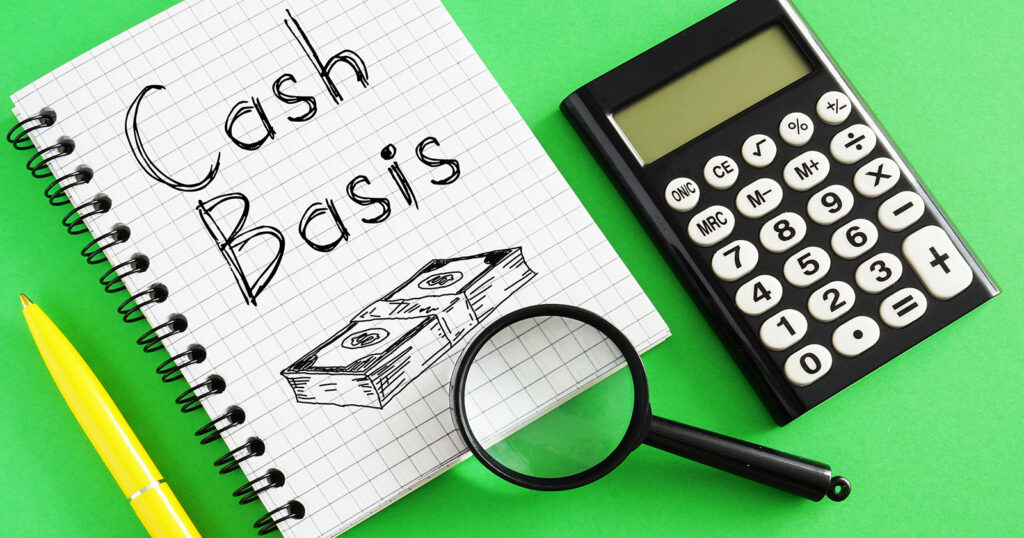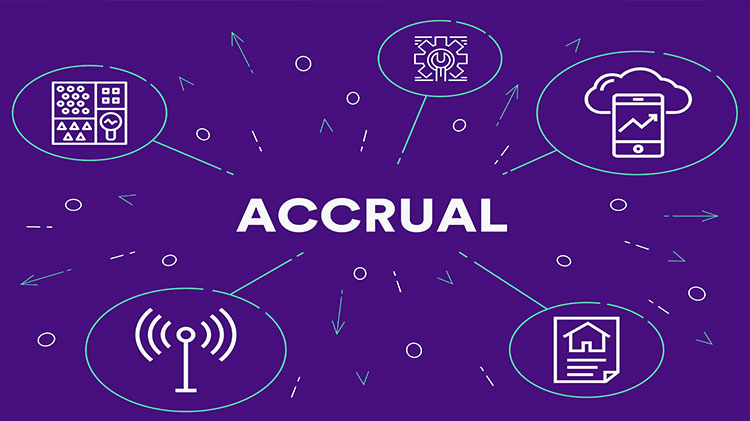As a start-up or a small company, business owners tend to use cash basis accounting to keep their records. It’s simple and serves the purpose of tracking money in and out of a company. As businesses grow bigger, cash accounting becomes less suitable and is more time-consuming for record keeping. That’s usually when companies start to consider switching to accrual accounting especially considering it’s the accepted method used in accounting standards. How do we go from cash basis accounting to accrual accounting? This is what we will find out in this article.

Quick Recap On Cash Basis Accounting VS Accrual Accounting
Cash basis accounting and accrual accounting are essentially two different methods of recording transactions for businesses.
Cash basis accounting: This method is simple and easily understandable by anyone without any accounting knowledge which is why it’s a popular method for start-ups or smaller companies that don’t have any reporting requirements. Cash basis accounting works based on when a transaction happens. If a company receives money for a sale, it gets recorded as an income and if it pays money to pay suppliers, it gets recorded as an expense. The key component in this method is when cash gets exchanged from one party to another. When a company gets bigger and has a lot more transactions, it can get quite overwhelming.
Accrual accounting: This method is accepted by accounting standards and paints a better picture of a company’s financial situation versus cash basis accounting. Accrual accounting ensures that transactions that have occurred in a specific financial period will be recorded in that same financial period. This means that if a sale or expense happens without cash exchange, it still gets recorded in the books. Therefore, contrary to cash basis accounting where a business could delay the payments of suppliers just to record a transaction later, with accrual accounting, the transaction gets recorded regardless if money was paid out or not. Same thing with sales, instead of recording the sale when cash is received, the transaction is recorded as soon as a sale is made. This paints a clear financial situation without any overstatement or understatement.
Read More:
Bookkeeper vs Accountant vs CPA: What’s the Difference?
Converting Cash to Accrual Accounting: Step-by-Step Method
Converting from a cash basis accounting to accrual accounting will require some analysis and journal entry adjustments. We’ll go through a step-by-step method.
- Create accounts receivable: When using the cash basis accounting, a company might not even have the accounts receivable in the systems. In accrual accounting, accounts receivable will be a key account to record sales where invoices have been issued to clients but payments from customers have not been received yet.
- Analyze and remove cash receipts: In accrual accounting, we don’t record a transaction when cash is received. Therefore, all cash receipts need to be analyzed and adjustments might be needed. Some sales could be related to the prior financial period but because cash was received in the current period, the sale only got recorded in the current financial period, which is wrong in accrual accounting. In those instances, the sale recorded in the current period needs to be reversed and recorded in the prior period by going through the retained earnings. Going forward, all sales need to be recorded when a sale transaction occurs and if a client doesn’t pay instantly, the sale goes through accounts receivable.
- Adjust for customer prepayments: Customer prepayments are when they pay for goods or services they have not received just yet. In cash basis accounting, because the money is received, the transaction is recorded as a sale. However, in accrual accounting, that’s not how it should be. Even if a customer has paid, if the sale transaction hasn’t occurred yet, it needs to be recorded as a liability until the goods or services have been provided to the customer. This transfer of ownership of goods or the service might be rendered in a future financial period which is why all cash receipts need to be analyzed and adjusted accordingly.
- Create accounts payable, review and add accrued expenses: In cash basis accounting, an expense is recorded only when cash payment occurs. In accrual accounting, as soon as goods or services are received from a supplier, the expenses need to be recorded even if you haven’t paid the supplier. This will go through accounts payable. Take a look at all your invoices received from suppliers where payment hasn’t occurred yet and record these expenses. This can include anything from employee salaries, administrative supplies and so much more.
- Adjust prepaid expenses: When using cash basis accounting, you might have recorded expenses that relate to multiple financial periods and not consumed them yet. This can apply to rents or insurance fees for example. As such, if some expenses were applicable for multiple periods and recorded at once, it needs to be adjusted and the portion that hasn’t been used needs to be transferred to an account called “prepaid expenses” in the assets on the balance sheet.
- Analyze and remove cash payments: Similar to cash receipts, you need to analyze the cash payments. If any payment is related to expenses of a prior period, this needs to be adjusted and go to the prior period by going through the retained earnings.
Read More:
Can I Do My Own Accounting for My Small Business? [Revealed]
Things to Consider Before the Conversion

A conversion from cash basis accounting to accrual accounting can be time-consuming due to the number of steps required and the number of transactions that needs to be analyzed. Prepare to spend a lot of time on this project.
Since there are quite some differences between the cash basis and accrual accounting, to ensure the conversion is 100% accurate, you should analyze every single transaction of a financial period. Consider including the transactions from the last financial period as well, it doesn’t necessarily need to be the full prior year but including at least transactions from the last quarter or up to half a year prior would be recommended.
If you are using an accounting software, you should look at the setups and ensure that everything is set properly moving forward so that recording of transactions are not going to be on a cash basis anymore. Don’t think that the software is going to do the work for you in the conversion though, it’s highly likely that it will be a full manual process involving a lot of adjusting journal entries.
Bottom Line: Convert Cash to Accrual Accounting
Cash basis is acceptable for small businesses with limited transactions that don’t have any external reporting requirements. As soon as a company grows or starts having reporting obligations, a conversion to accrual accounting might be needed. It’s not an easy task so save some time to spend on this project and follow our step-by-step guide to get through the conversion. In the end, accrual accounting is a more accurate representation of the financial situation of a company so the extra work used in the conversion is definitely worth it.



